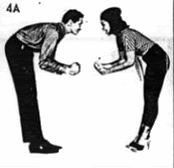
Disturbing the Normies
Into the Heart of Ska
Before there was Reggae, before there was Rocksteady, there was Ska. A genre of Jamaican music that intoxicates you and you can't help but smile while doing the dance. I was introduced to it last summer when I went back to Jamaica to visit my family and my mum took my sister and I to a JCDC (Jamaica Cultural Development Commision) event called "Heart of Ska".
I'd heard about Ska when I was younger but never actually knew what it was until last summer. I'm still learning about the music, the artistes and how to do the dance (would be simple but I've got two left feet). I also noticed something else on that night too... the majority of peolpe attending the event were all over 30! This really hit me and made me wonder if my generation is either completely unaware of Ska or has just chosen to forget it. Ska is a part of the Jamaican culture and culture is not something you just leave up on the shelf of your mind to gather dust. It's something that defines you, makes you who you are, makes you proud of who you are. And that's definitely not something I would ever give up.
Anyways, I could stay all day and rant and rave about culture but I'd rather introduce to you an old, upbeat genre of music that coveted the 50's, 60's and a bit of the 90's. In less than 300 words, here is little history about Ska from jamaicanmusic.com:

Originated in Jamaica in the late 1950s, Ska came before musical styles such as Rocksteady and Reggae. Ska is a combined musical element of Caribbean Mento and Calypso with a bit of American Jazz and also Rhythm and Blues. It separates itself from other musical genres due to its walking bass line accented with rhythms on the upbeat. In the early 1960s, Ska was the dominant music genre of Jamaica and was popular with the other communities as well, including the British Community.
Ska music was made for dancing. It stand out because the music is upbeat, quick and exciting. Musically, it can be characterized with a drumbeat on the 2nd and 4th beats (in 4/4 time) and with the guitar hitting the 2nd, 3rd and 4th beats. Traditional Ska bands generally featured bass, drums, guitars, keyboards, horns with sax, trombone and trumpet being most common.
Music historians typically divide the history of Ska into three periods: the original Jamaican scene of the 1960s (First Wave); the English 2 Tone Ska revival of the late 1970s (Second Wave); and the third wave Ska movement, which started in the 1980s and rose to popularity in the US in the 1990s. Without a doubt Ska has set a musical standard for genres that follow it such as Reggae and Rocksteady.
If you want more info on Ska you can check out The Reggaskas site. Or you can watch this short documentary.
